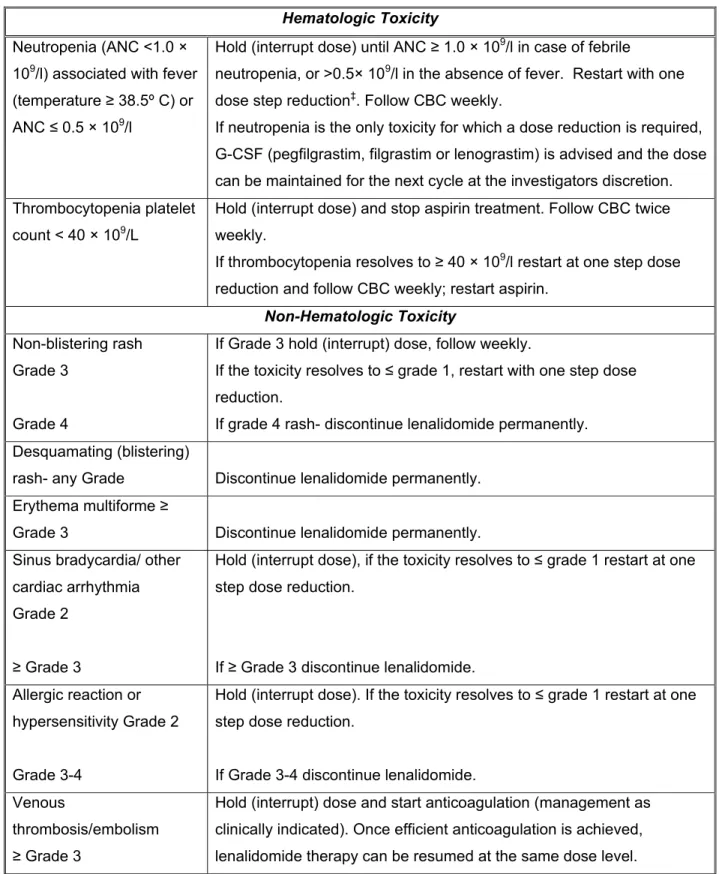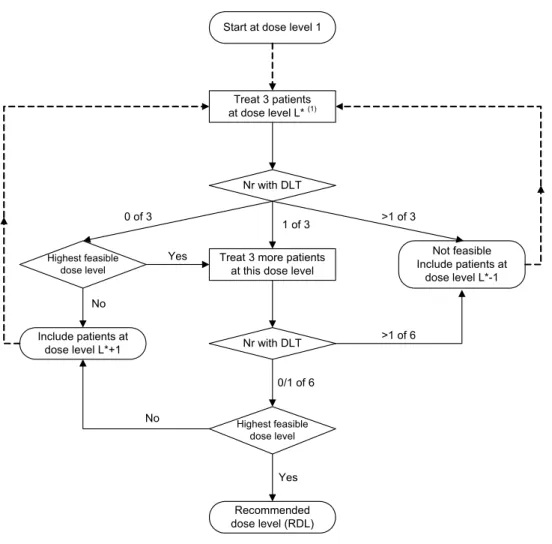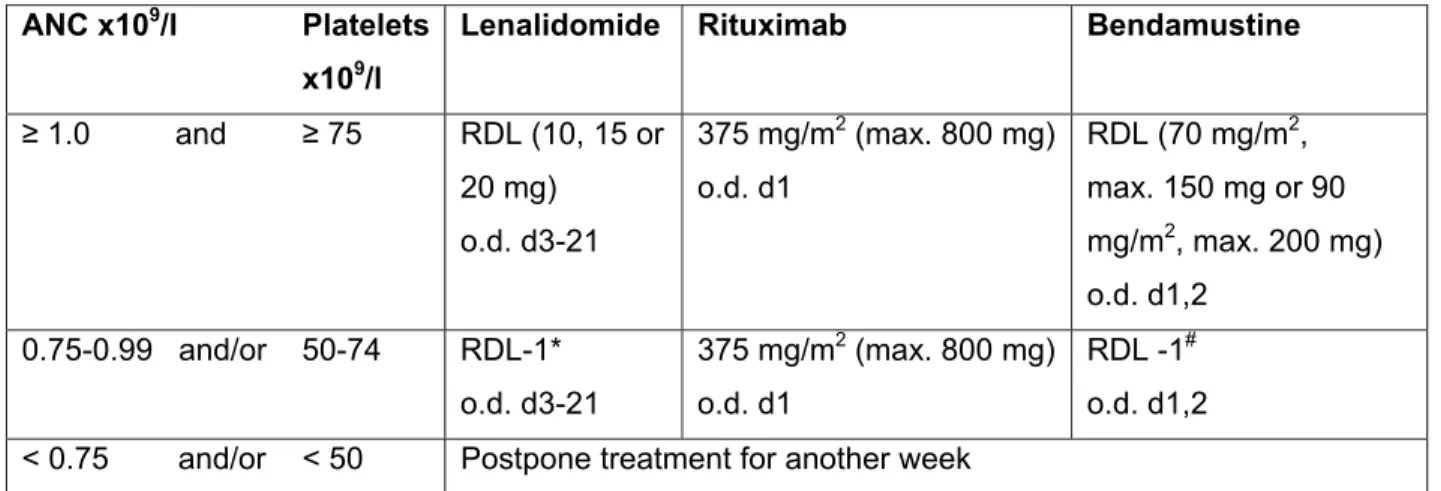For Phase II of the study: To determine the efficacy and toxicity of the two arms of the study (Arm A: lenalidomide and rituximab, and Arm B: lenalidomide, rituximab, and bendamustine) in patients with relapsed follicular lymphoma (FL). The objective of the phase I part of the study is to determine the RDL of lenalidomide and.
Follicular lymphoma
Whether or not the quality of the response achieved is important not only for progression-free survival (PFS), but also for OS has been debated for a long time. However, recent long-term follow-up data from the GELA clearly show a significant improvement in OS in patients with a complete response compared to patients with a partial response18.
Current treatment for newly diagnosed and relapsed FL patients
The role of maintenance treatment with rituximab has been established for patients with relapse15,16 and recently it has been shown to prolong PFS even in the first line17.
Follicular lymphoma: the role of the microenvironment
Lenalidomide
Background and rationale for the use of lenalidomide in NHL
Recently, both in CLL and in FL, impairment of the T-cell immunological synapse formation has been shown to be an active immunosuppressive mechanism. Additional work to better elucidate lenalidomide's mechanism of action in NHL and its ability to modulate the cellular interaction between the microenvironment and the malignant lymphoma cells will be part of the current study.
Clinical studies with lenalidomide in NHL
Despite these recent observations, the exact mechanism of action of lenalidomide in NHL remains highly uncertain. It is possible that the antitumor activity of lenalidomide is mediated by multiple, possibly mutually exclusive processes that are primarily dependent on the type of tumor cells and their microenvironment.
Bendamustine
Friedberg53 and Kahl54 both conducted similar phase II studies with a similar dosing schedule in relapsed indolent NHL in the US. Rummel showed a high ORR of 90% with 60% CR in 63 patients with relapsed indolent NHL or mantle cell lymphoma (MCL) and a median PFS of 24 months56.
Combination of lenalidomide and bendamustine
Additionally, more than 50 patients were re-treated with bendamustine after treatment in the StIL study protocols without major unexpected toxicity (M. Rummel, personal . communication). These data show that even when using a more myelosuppressive regimen, such as the BMR regimen, retreatment with bendamustine is possible.
The subcutaneous use of rituximab
The subcutaneous use of rituximab
Preclinical, clinical and extensive post-marketing experience with the rHuPH20 excipient used in the rituximab s.c.
Clinical trials with rituximab s.c
The role of PET-CT in patients with FL
Rationale of the study
To study the efficacy and toxicity of the two study arms (LR: lenalidomide and rituximab, and LRB: lenalidomide, rituximab and bendamustine) in patients with relapsed follicular lymphoma, and to identify the most promising of these two treatment arms. For this final analysis, sequential fine needle aspirations and biopsies will be performed on a selection of patients.
Phase I
If the maximum dose level is reached with 3 patients, an additional 3 patients will be treated at this dose level. Due to the 3+3 dose-escalation schedule, a minimum of 15 and a maximum of 24 evaluable patients, if all dose levels are used, will be included in the phase I portion of the study.
Randomized phase II part of the trial
Both experimental arms will efficacy and toxicity will be assessed separately, and a formal comparison between the two treatment arms will not be performed. In part II. phase of the study, we incorporated an interim analysis after the inclusion of half of the patients in each group in order to protect patients from ineffective or toxic treatment with a request for early treatment. stop the trial if the CR rate during/after induction treatment is poor or the rate of severe toxicity is too high.
Eligibility for registration/randomization
Inclusion criteria
Bulky disease at baseline by GELF criteria68 nodal or extranodal mass (except spleen) > 7 cm in greatest diameter. Patients must be able to adhere to the requirements of the Lenalidomide Pregnancy Prevention Risk Management Plan;
Exclusion criteria
Patients with gout are advised to switch to another anti-gout medication due to the risk of Stevens-Johnson syndrome seen in patients taking bendamustine and allopurinol. History of active malignancy within the past 5 years, excluding basal carcinoma of the skin, squamous cell carcinoma of the skin, carcinoma in situ of the cervix, carcinoma in situ of the breast, prostate cancer (TNM stage of T1a or T1b);.
Induction in the phase I part of the study: lenalidomide, rituximab and bendamustine
Treatment schedule
If applicable, rounding of the calculated dose to the nearest 100 mg is permitted (dose band). Patients who are in PR or CR based on results of the CT scan (in the phase I part, a PET scan is not required and also not reimbursed) after 6 cycles of induction therapy will receive rituximab maintenance therapy.
Dose adjustments during the phase I part of the study
Patients who are not in PR/CR after 4, 5 or 6 induction cycles will exit protocol treatment.
Special precautions and supportive care
Induction in the phase II part of the study
Treatment schedule
The first dose of rituximab (Day 1 Cycle 1) is always given i.v. datum; subsequent doses can be given either i.v. Patients who are in PR or CR based on PET-CT scan results after 6 cycles of induction treatment receive rituximab maintenance treatment for up to 2 years.
Dose adjustments
If thrombocytopenia progresses to l restart with a step of dose reduction and monitor CBC weekly; resume aspirin. Hold (interrupted dose), if toxicity progresses to grade ≤ 1, resume with a dose reduction step.

Special precautions and supportive care
Patients with additional risk factors (eg, previous thrombotic events) should be treated with LWMH or oral vitamin K antagonists according to local institutional practice. Antibiotic prophylaxis with cotrimoxazole and (val)aciclovir is mandatory for patients treated with bendamustine. Antibiotic prophylaxis should be continued until the CD4 count has taken place.
Rituximab maintenance treatment
Treatment schedule
Consult dermatologist and start application of topical treatment to affected areas (eg triamcinolone cream 0.1% or equivalent steroid cream class 2 for a facial rash; dermovate or equivalent steroid cream class 4 for other parts of the body). Investigators should be aware of the possibility of a TFR and should not prematurely assess swollen lymph nodes as progressive disease.
Dose adjustments
Special precautions and supportive care
Co-intervention
The Investigational Medicinal Product Lenalidomide
- Summary of known and potential risks
- Preparation and labeling
- Storage and handling
- Study drug supply
- Drug accountability
- Study drug return and destruction
Lenalidomide will be shipped to trial sites in containers labeled as investigational drug. No trial drug will be shipped until the sponsor verifies that all regulatory required documents and site approvals are available.
The Investigational Medicinal Product Rituximab
- Preparation and labeling
- Storage and handling
- Study drug supply
- Drug accountability
The trial site should destroy used or partially used containers of study medication after medication accountability records have been completed.
The Investigational Medicinal Product Bendamustine
- Summary of known and potential risks
- Preparation and labeling
- Storage and handling
- Study drug supply
- Drug accountability
- Study drug return and destruction
Any unused product or waste material should be disposed of in accordance with local requirements. Unused investigational drug should be stored until the sponsor has instructed the investigator to return or destroy the product.
Time of clinical evaluations
The investigator, or a pharmacist or other appropriate person designated by the investigator, must maintain records of the delivery of the product to the study site, inventory at the site, use by each patient, and return to the sponsor or alternative order. of unused product(s). Investigators should maintain records that adequately document that patients received protocol-specified doses and reconcile all investigational products received from the sponsor.
Required investigations
The PET-CT scan and central laboratory for ancillary studies will be performed only in the phase II part of the study. At the end of induction (usually after cycle 6 (6-8 weeks after the start of cycle 6; 2-4 weeks after the end of cycle 6) and at the end of maintenance (only if positive at enrollment, and only to confirm CR).
Response evaluation
Definition of Response
Central review
Pathology review
In case of diagnostic difficulties and/or major discrepancies with clinical implications for treatment and/or follow-up, the reviewing pathologists will discuss those cases together and report back to the principal investigator as soon as possible. A copy of the review results will be sent to the HOVON Data Center.
PET review
Side studies
FNA/rebiopsy studies will only be performed in a subset of patients (HOVON and GLSG only). FNA/rebiopsy studies will only be performed in a subset of patients (HOVON and GLSG only) to also investigate the effect of lenalidomide and bendamustine on T, NK and macrophage subsets at the tissue level.
Specific criteria for withdrawal of individual patients
We have previously reported that this is feasible and highly informative about the mechanisms of the treatment effect of low-dose radiotherapy in follicular lymphoma71. Recent data have shown that OS is significantly increased in FL patients who achieve a CR compared to patients who achieve a PR20, indicating that the quality of response is important.
Follow up of patients withdrawn from treatment
Premature termination of the study
Definitions
All suspected adverse reactions occurring in the trial that are unexpected and serious. Suspected adverse reactions (ARs) are those AEs for which a reasonable causal relationship is suspected with any administered dose of the investigational medicinal product and the event.
Adverse event
Reporting of adverse events
Adverse events that occur after 30 days must also be reported if they are at least possibly related to the investigational drug by the investigator. Progression of the disease being studied; complaints and complications due to disease progression remain reportable adverse events.
Follow up of adverse events
Adverse events will be graded according to the NCI Common Terminology Criteria for Adverse Events, version 4 (see Appendix H) except for TLS and TFR, which will be graded according to Appendix I and Appendix J. Pre-existing conditions will be collected at baseline concurrent diseases CRF, i.e. symptomatic) diseases of any degree of diseases under treatment, chronic diseases and long-term effects of previous events that were present at the time of baseline assessment. However, TLS and TFR MUST be reported in case of CTCAE grade ≥ 1 according to Appendices I and J respectively.
Serious Adverse Events
- Reporting of serious adverse events
- Causality assessment of Serious Adverse Events
- Follow up of Serious Adverse Events
- Processing of serious adverse event reports
UNLIKELY There is little evidence to suggest that a causal relationship exists (eg the event did not occur within a reasonable time after administration of the trial medication). There is another reasonable explanation for the event (eg the patient's clinical condition, other concomitant treatments).
Reporting Suspected Unexpected Serious Adverse Reactions
Pregnancies
Pregnancies must be reported to the HOVON Data Center within 24 hours of the incident becoming known to the investigator using the pregnancy report form provided. The investigator is encouraged to provide outcome information about the pregnancy of the female partner to a male subject if this information is available to the investigator and the female partner gives her permission.
Second Primary Malignancies
The investigator will monitor the subject until the termination of the pregnancy and must notify the sponsor of the outcome of the pregnancy within 5 days or as indicated below. Documentation of a diagnosis of a second primary malignancy should be submitted at the time of reporting a serious adverse event (eg, pathology report).
Reporting of safety issues
Events of a second primary malignancy should be reported using the SAE report form and should be considered a "major medical event" even if no other serious criteria apply. The occurrence of secondary primary malignancies is also monitored using a special form (Registration of second primary malignancy).
Annual safety report
The SPM should also be documented on other relevant pages of the CRF (eg, adverse event form and follow-up form). For any case of SPM that occurs during treatment, contact the principal investigator to discuss whether treatment should be discontinued.
Data Safety and Monitoring Board
DSMB members will not be involved in the study, work in the HOVON Data Center, be HOVON board members, or work in a hospital department participating in the study. The trial statistician communicates the public portion of the DSMB recommendation to the Principal Investigator, Co-Investigator(s) and the chair of the HOVON working group involved.
Definitions
DLT and RDL (phase I)
The members of the DSMB are invited on a personal basis based on their expert knowledge of the disease in question or the research methodology. For skin toxicity, grade 3 toxicity is considered DLT only if all criteria for grade 3 are met (CTC 4.0, Skin and subcutaneous tissue disorders - other, specify. Grade 3: Disabling; severe or medically significant but not immediately life-threatening; hospitalization or extension of existing hospitalization indicated; limitation of self-care ADL) and/or if >90% of the body surface is.
Severe toxicity (phase II)
Grade 3 laboratory abnormalities are considered DLT only if they persist for > 2 weeks or if they do not return to ≤ grade 1. Any infection/fever requiring IV antibiotics is not considered a DLT, only grade 4 infection it is.
Phase I
For nausea, vomiting, or diarrhea, subjects must have a grade 3 or 4 event that persists at that level despite the use of optimal symptomatic treatment for these events to be considered DLT 5.
Phase II
Patient numbers and power considerations
Phase I
Phase II
PCR0 is the highest CR probability, which, if true, implies that the therapeutic activity is too low and does not warrant further study of the regimen. Ptox0 is the minimum probability of severe toxicity, which, if true, implies that the severe toxicity is unacceptable and does not warrant further investigation of the regimen.
Statistical analysis
- Efficacy analysis
- Toxicity analysis
- Additional analyses
- Statistical analysis plan (optional)
Per treatment arm (or in the phase I part of the study, per dose level), the analysis of treatment toxicity will be done primarily by tabulating the incidence of adverse events and infections by treatment cycle. Before further analysis is performed, a separate analysis plan will be discussed with the PI.
Interim analysis
For each treatment arm (or in the phase I part of the study, per dose level), the occurrence of adverse events defined as DLT or serious toxicity will be reported by cycle as well as by patient. It will be discussed with the study coordinators and may only affect the exploratory analyses, but not the primary analysis on which the sample size is based.
Regulatory Documentation
Registration and Randomization
Each patient will be given a unique patient study number (a sequence number according to order of enrollment in the trial). Patient study number and randomization result will be given immediately by TOP or phone and confirmed by fax or email.
Case Report Forms
DLT data collection
This DLT form must be completed by the responsible investigator for each patient, during cycles 1 and 2. DLTs must be reported between start of induction cycle 1 and day 29 after start of induction cycle 2 or until start of next treatment.
Rapid reporting
Data quality assurance
If necessary, questions will be sent to the place of investigation to clarify the data in the CRF.
Monitoring
Audits and inspections
Accredited ethics committee or Institutional Review Board
Ethical conduct of the study
Patient information and consent
Benefits and risks assessment
Trial insurance
Handling and storage of data and documents
- Patient confidentiality
- Filing of essential documents
- Record retention
- Storage of samples
The investigator must file all essential documents related to the conduct of the field trial. The sponsor will submit all essential documents related to the conduct of the trial.
Amendments
Source documents (ie medical records) of patients must be kept for at least 15 years after the end of the trial. Record retention and destruction after this time is subject to the website's guidelines regarding medical records.
Annual progress report
All significant changes will be submitted to the ethics committee and to the competent authority. Non-material changes will not be submitted, but will be recorded and archived by Sponsor.
End of study report
Publication policy
The impact of the tumor microenvironment on prognosis in follicular lymphoma depends on specific treatment protocols. Bortezomib, bendamustine, and rituximab in patients with relapsed or refractory follicular lymphoma: the phase II VERTICAL study Clin Oncol.
FOLLICULAR LYMPHOMA (WHO CLASSIFICATION)
ANN ARBOR STAGE
MEASURABLE DISEASE, RESPONSE AND ENDPOINTS
50% decrease in SPD of up to 6 largest dominant masses; no increase in size of other node (a) FDG-avid or PET positive for therapy; one or more PET positive in previously affected area (b) Varying FDG-avid or PET negative or no pre-treatment PET;. Lesions PET positive if FDG-resistant lymphoma or PET positive for therapy or no PET pretreatment.
STANDARD COCKCROFT AND GAULT FORMULA FOR CALCULATED CREATININE CLEARANCE
ZUBROD-ECOG-WHO PERFORMANCE STATUS SCALE
NYHA SCORING LIST
COMMON TERMINOLOGY CRITERIA FOR ADVERSE EVENTS
CAIRO-BISHOP GRADING CLASSIFICATION OF TUMOR LYSIS SYNDROME
GRADING OF TUMOR FLARE SYNDROME



